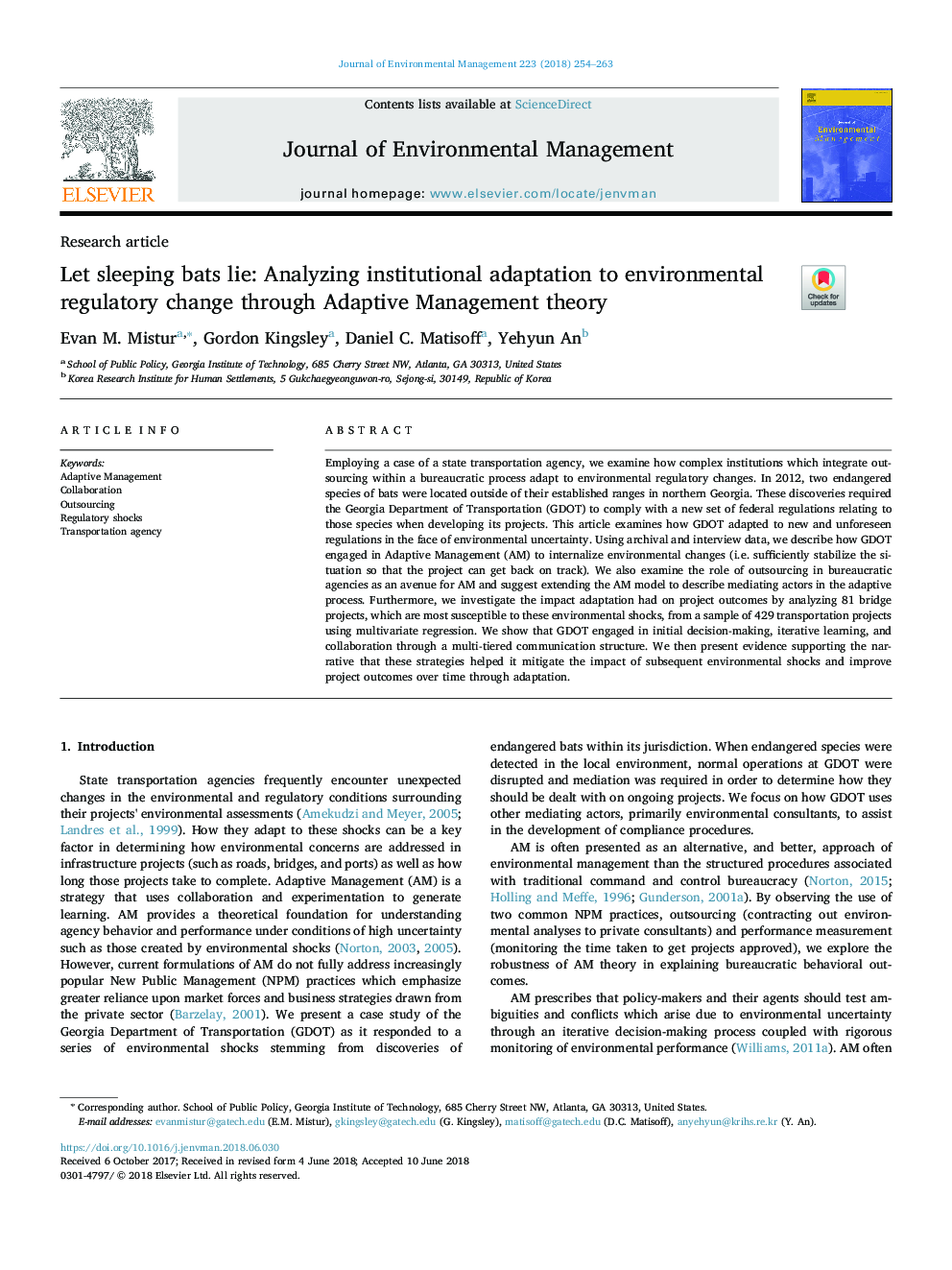| Article ID | Journal | Published Year | Pages | File Type |
|---|---|---|---|---|
| 7475836 | Journal of Environmental Management | 2018 | 10 Pages |
Abstract
Employing a case of a state transportation agency, we examine how complex institutions which integrate outsourcing within a bureaucratic process adapt to environmental regulatory changes. In 2012, two endangered species of bats were located outside of their established ranges in northern Georgia. These discoveries required the Georgia Department of Transportation (GDOT) to comply with a new set of federal regulations relating to those species when developing its projects. This article examines how GDOT adapted to new and unforeseen regulations in the face of environmental uncertainty. Using archival and interview data, we describe how GDOT engaged in Adaptive Management (AM) to internalize environmental changes (i.e. sufficiently stabilize the situation so that the project can get back on track). We also examine the role of outsourcing in bureaucratic agencies as an avenue for AM and suggest extending the AM model to describe mediating actors in the adaptive process. Furthermore, we investigate the impact adaptation had on project outcomes by analyzing 81 bridge projects, which are most susceptible to these environmental shocks, from a sample of 429 transportation projects using multivariate regression. We show that GDOT engaged in initial decision-making, iterative learning, and collaboration through a multi-tiered communication structure. We then present evidence supporting the narrative that these strategies helped it mitigate the impact of subsequent environmental shocks and improve project outcomes over time through adaptation.
Related Topics
Physical Sciences and Engineering
Energy
Renewable Energy, Sustainability and the Environment
Authors
Evan M. Mistur, Gordon Kingsley, Daniel C. Matisoff, Yehyun An,
